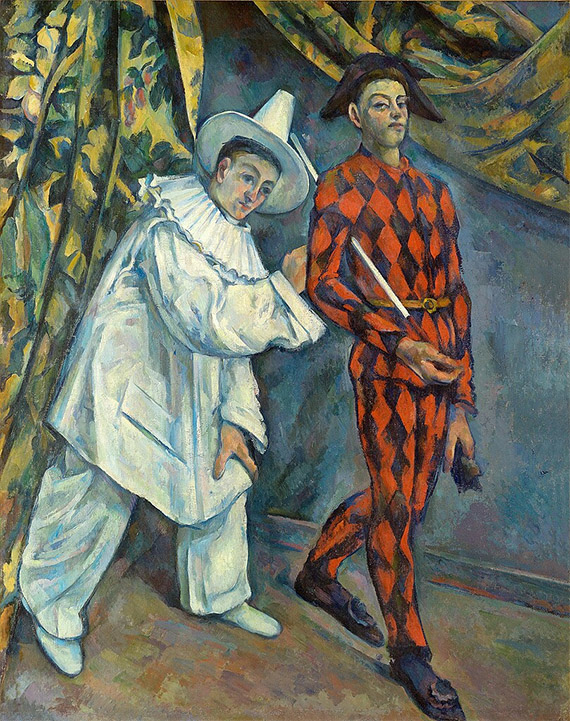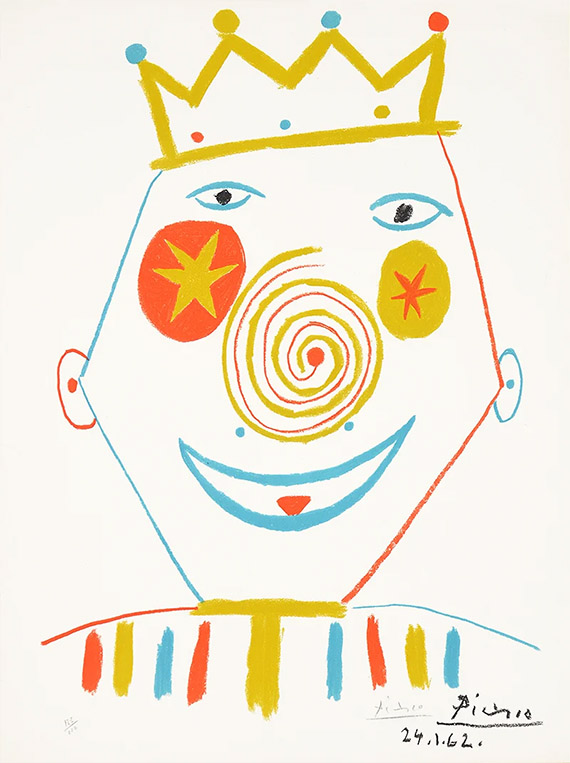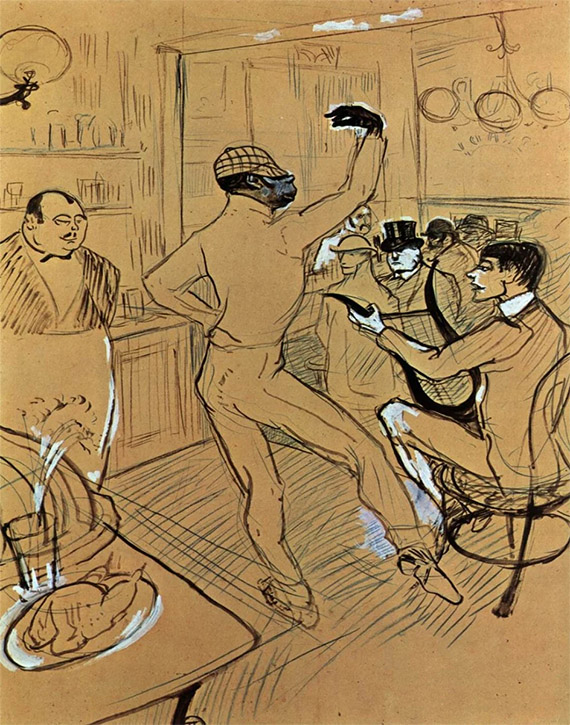Top Famous Paintings of Clowns in Art History
Clown paintings have long been a source of fascination for both artists and art enthusiasts for ages. Their colorful garb and enigmatic visages have consistently piqued interest. Numerous iconic clown artworks are celebrated for their depth and symbolism. More importantly, they capture the intricate essence of these characters.
In this article, we’ll dive into the world of the most prominent paintings of clowns. We’ll explore their artistic brilliance. Okay, great. Let's delve in.
Pierrot and Harlequin by Paul Cezanne

Paul Cezanne is a true star in the realm of Post-Impressionism. He crafted Pierrot and Harlequin during the late 19th century. This masterpiece features 2 archetypal figures, Pierrot & Harlequin, immersed in thought. Cezanne's choice of muted colors and signature brushwork imparts a mood of introspection and depth.
The Blue Clown by Pablo Picasso

Pablo Picasso was a master of modern art. Throughout his career, he frequently drew inspiration from clowns and circus life. Picasso's Blue Period is evident in The Blue Clown. This clown painting made by Picasso is highly regarded. The artwork is dominated by a dark blue color. It captures the vulnerability and profound emotions often linked with clown archetypes.
Chocolat by Henri Toulouse-Lautrec

Henri Toulouse-Lautrec was an illustrious French artist of the 19th century. He had a fascination for the worlds of cabarets and circuses. Toulouse-Lautrec depicts the famous clown Chocolat in his painting named Chocolat. This artwork depicts a black performer and breaks racial boundaries. The painting captures the clown's energy and highlights his craft's social importance.
Clown With A Violin By Viktor Vasnetsov
Clown With a Violin by Viktor Vasnetsov is one of those famous paintings that immediately capture the imagination. Vasnetsov, a 19th and 20th-century Russian artist, crafted this enchanting depiction of a jester immersed in a surreal setting with a fiddle. The painting's composition transports viewers to a realm where music and fun blend.
Vasnetsov's meticulous detailing and vibrant hues conjure a fantastical ambiance. The Clown and violin create a playful and joyful mood. It invites observers to partake in the revelry and fun. Through his artistry, Vasnetsov captures masterfully the allure, charm, and whimsy of clowns.
Portrait of a Clown by Federico Beltran Masses
Federico Beltran Masses, a Cuban/Spanish portraitist, excelled in painting portraits. In this painting, Beltran-Masses meticulously details a clown. Attention to detail wows the viewers. This clown painting blends joy with melancholy. It reveals complex emotions hidden behind the clown's mask.
Conclusion
Iconic clown portraits offer a captivating window into the universe of these cherished yet often enigmatic figures. These old masterpieces, from Cezanne’s contemplative portrait to Picasso’s exploration of clowns' emotional depths, showcase the artistry and symbolism that clowns represent. The strokes of Toulouse-Lautrec, Vasnetsov, and Beltran-Masses beckon us into a realm of enchantment, vulnerability, and creative flair.
No Comments Yet...